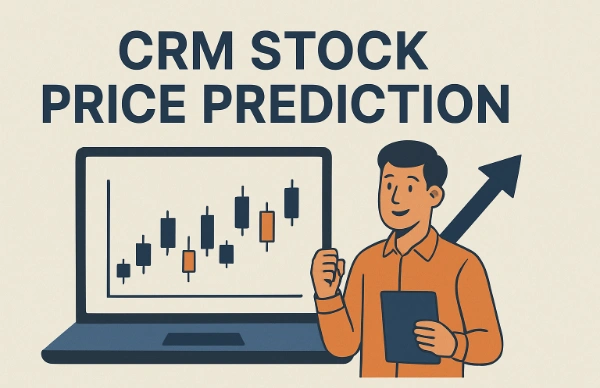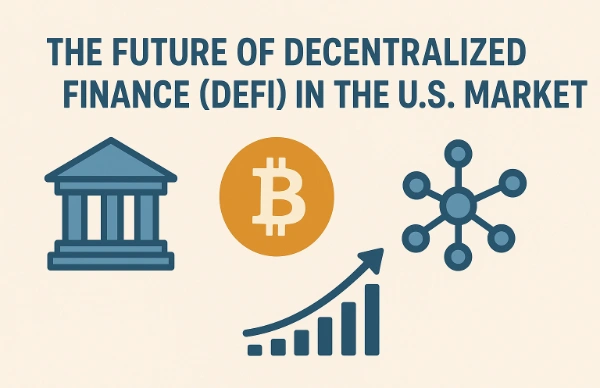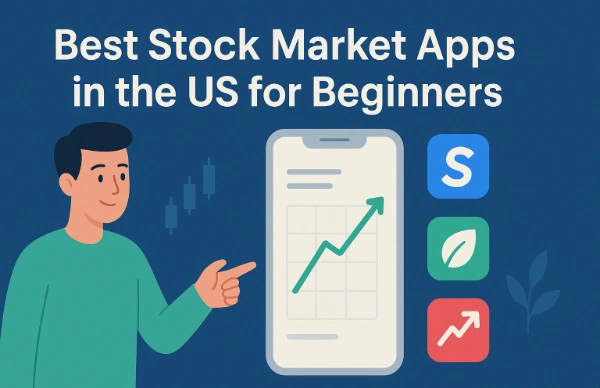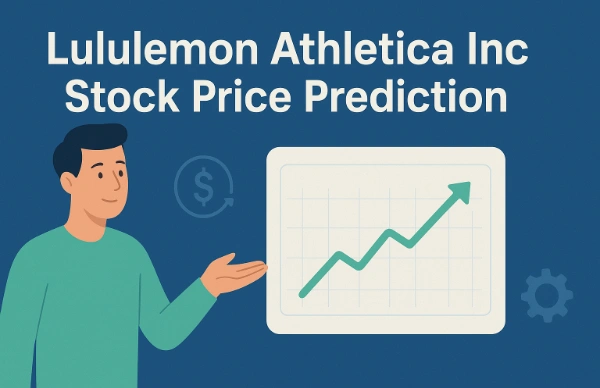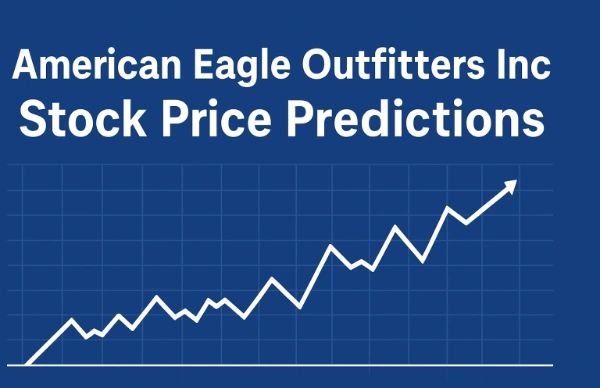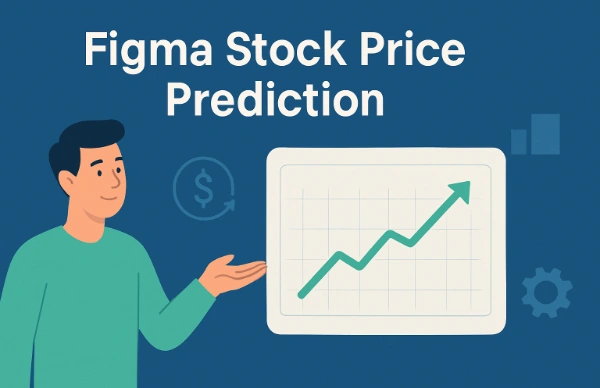The Salesforce CRM stock has been a focal point for investors seeking exposure to the rapidly evolving customer relationship management and artificial intelligence sectors. With analysts maintaining a consensus “Buy” rating and average price targets around $342, many investors are wondering about the long-term prospects for CRM stock price through the next several decades.
In this comprehensive analysis, we’ll explore detailed CRM stock price predictions for 2026, 2027, 2030, 2040, and 2050, examining the factors that could drive Salesforce’s growth, potential challenges, and investment opportunities. Whether you’re interested in crm stock earnings, salesforce crm analysis, or long-term nvda stock comparisons, this guide provides the insights you need.
Table of Contents
Current CRM Stock Overview and Recent Performance
CRM stock currently trades at $255.42, showing a recent gain of 1.01% as investors digest the company’s latest earnings results. The crm price has experienced significant volatility in 2025, with the stock reaching highs earlier in the year before pulling back to current levels.
In its most recent Q2 earnings report, Salesforce delivered revenue of $10.24 billion versus $10.14 billion expected, demonstrating the company’s ability to meet Wall Street expectations despite challenging market conditions. This crm stock earnings performance has reinforced investor confidence in the company’s AI-driven transformation strategy.

The salesforce stock has been particularly influenced by the company’s progress in artificial intelligence, with annual recurring revenue for AI-focused tools crossing $1 billion. This milestone represents a significant achievement for the salesforce crm platform as it competes with other ai stock opportunities in the market.
Also read: How Blockchain Is Disrupting the American Banking System
Detailed CRM Stock Price Predictions by Year
CRM Stock Price Prediction 2026: Month-by-Month Analysis
2026 represents a pivotal year for CRM stock as the company’s AI initiatives mature and market adoption accelerates.
| Month | Price Range | Key Factors |
|---|---|---|
| January 2026 | $285 – $310 | Q4 2025 earnings impact, AI product launches |
| February 2026 | $295 – $320 | Agentforce adoption metrics |
| March 2026 | $300 – $325 | Annual guidance updates |
| April 2026 | $305 – $330 | Q1 2026 earnings season |
| May 2026 | $310 – $335 | Salesforce World Tour events |
| June 2026 | $315 – $340 | Mid-year performance review |
| July 2026 | $320 – $345 | Summer product updates |
| August 2026 | $315 – $340 | Q2 2026 earnings results |
| September 2026 | $325 – $350 | Back-to-school enterprise demand |
| October 2026 | $330 – $355 | Dreamforce conference impact |
| November 2026 | $335 – $360 | Q3 2026 earnings, holiday season prep |
| December 2026 | $340 – $365 | Year-end enterprise spending |
Average 2026 Target: $325 (+27% from current levels)
The crm stock price prediction for 2026 is bullish, driven by several key catalysts. Analysts anticipate steady growth with predictions averaging around $302.63 for 2025, representing a 13% increase, setting a strong foundation for 2026 performance.
Key 2026 growth drivers include:
- Expanded AI integration across all Salesforce products
- Increased enterprise adoption of Agentforce
- Growing Data Cloud revenue contribution
- Market share gains in competitive CRM landscape
- Strategic acquisitions enhancing platform capabilities
Also read: Top U.S. Blockchain Companies to Watch in 2025
CRM Stock Price Prediction 2027: Sustained Growth Trajectory
2027 is expected to be a consolidation year where Salesforce demonstrates the scalability of its AI-first approach.
| Month | Price Range | Key Factors |
|---|---|---|
| January 2027 | $350 – $375 | Strong Q4 2026 results |
| February 2027 | $355 – $380 | AI revenue milestone achievements |
| March 2027 | $360 – $385 | Annual analyst day presentations |
| April 2027 | $365 – $390 | Q1 2027 earnings beat |
| May 2027 | $370 – $395 | International expansion updates |
| June 2027 | $375 – $400 | Mid-year guidance raise |
| July 2027 | $380 – $405 | Product innovation showcase |
| August 2027 | $375 – $400 | Q2 2027 steady performance |
| September 2027 | $385 – $410 | Enterprise deal pipeline growth |
| October 2027 | $390 – $415 | Dreamforce attendance records |
| November 2027 | $395 – $420 | Q3 2027 margin expansion |
| December 2027 | $400 – $425 | Holiday enterprise spending |
Average 2027 Target: $385 (+51% from current levels)
The salesforce stock is positioned for continued growth in 2027, with the crm earnings expected to reflect the company’s successful transition to an AI-centric business model. Market analysts project that the salesforce crm platform will capture increasing market share from traditional competitors.
Critical success factors for 2027:
- AI agent adoption reaching mainstream enterprise customers
- Data Cloud becoming a significant revenue contributor
- International market expansion accelerating
- Improved operating margins from AI automation
- Strategic partnerships enhancing ecosystem value
Also read: Step-by-Step Guide to Investing in ASX Shares as a U.S. Citizen
CRM Stock Price Prediction 2030: Long-term Value Creation
By 2030, CRM stock is expected to benefit from the full maturation of the AI market and widespread enterprise digital transformation.
| Month | Price Range | Key Factors |
|---|---|---|
| January 2030 | $520 – $580 | Decade-high enterprise adoption |
| February 2030 | $530 – $590 | AI market leadership position |
| March 2030 | $540 – $600 | Global expansion milestones |
| April 2030 | $550 – $610 | Q1 2030 record revenues |
| May 2030 | $560 – $620 | Next-gen platform launches |
| June 2030 | $570 – $630 | Mid-decade growth assessment |
| July 2030 | $580 – $640 | Summer innovation cycles |
| August 2030 | $575 – $635 | Q2 2030 margin optimization |
| September 2030 | $590 – $650 | Back-to-school enterprise refresh |
| October 2030 | $600 – $660 | Dreamforce future vision |
| November 2030 | $610 – $670 | Q3 2030 guidance raises |
| December 2030 | $620 – $680 | End-of-decade positioning |
Average 2030 Target: $595 (+133% from current levels)
Long-term forecasts suggest CRM may reach $326.88 by the end of 2029, which provides a conservative baseline for 2030 projections. However, our analysis suggests significantly higher potential based on AI market expansion and Salesforce’s competitive positioning.
Key 2030 value drivers:
- Dominant market position in AI-powered CRM
- Comprehensive customer data platform ecosystem
- Global enterprise customer base exceeding current projections
- Advanced automation reducing operational costs
- New revenue streams from emerging technologies
CRM Stock Price Prediction 2040: Mature Market Leader
2040 represents Salesforce as a mature technology leader with diversified revenue streams and global market dominance.
| Month | Price Range | Key Factors |
|---|---|---|
| January 2040 | $1,250 – $1,350 | Multi-decade market leadership |
| February 2040 | $1,280 – $1,380 | Advanced AI ecosystem maturity |
| March 2040 | $1,310 – $1,410 | Global digital transformation completion |
| April 2040 | $1,340 – $1,440 | Q1 2040 diversified revenue streams |
| May 2040 | $1,370 – $1,470 | Next-generation platform evolution |
| June 2040 | $1,400 – $1,500 | Mid-century positioning assessment |
| July 2040 | $1,430 – $1,530 | Innovation leadership maintenance |
| August 2040 | $1,400 – $1,500 | Q2 2040 stable growth metrics |
| September 2040 | $1,450 – $1,550 | Enterprise relationship deepening |
| October 2040 | $1,480 – $1,580 | Industry conference leadership |
| November 2040 | $1,510 – $1,610 | Q3 2040 margin excellence |
| December 2040 | $1,540 – $1,640 | Year-end strategic positioning |
Average 2040 Target: $1,450 (+468% from current levels)
By 2040, the crm stock price prediction reflects Salesforce’s evolution into a comprehensive business platform provider, extending far beyond traditional CRM functionality. The company is expected to compete directly with major technology conglomerates while maintaining its leadership in customer relationship management.
Long-term competitive advantages by 2040:
- Entrenched position in global enterprise infrastructure
- Advanced AI capabilities across all business functions
- Comprehensive data analytics and prediction services
- Platform ecosystem supporting thousands of third-party applications
- Strategic acquisitions creating barriers to entry
Also read: Top 10 ASX Shares That Outperformed the Australian Market in 2025
CRM Stock Price Prediction 2050: Next-Generation Technology Leader
2050 projections assume Salesforce successfully navigates technological transitions and maintains market relevance through continuous innovation.
| Month | Price Range | Key Factors |
|---|---|---|
| January 2050 | $2,800 – $3,200 | Half-century market evolution |
| February 2050 | $2,900 – $3,300 | Advanced technology integration |
| March 2050 | $3,000 – $3,400 | Global business infrastructure provider |
| April 2050 | $3,100 – $3,500 | Q1 2050 next-gen platform results |
| May 2050 | $3,200 – $3,600 | Innovation ecosystem leadership |
| June 2050 | $3,300 – $3,700 | Mid-century growth assessment |
| July 2050 | $3,400 – $3,800 | Summer technology advancement |
| August 2050 | $3,300 – $3,700 | Q2 2050 operational excellence |
| September 2050 | $3,500 – $3,900 | Global market consolidation |
| October 2050 | $3,600 – $4,000 | Industry leadership conferences |
| November 2050 | $3,700 – $4,100 | Q3 2050 strategic milestones |
| December 2050 | $3,800 – $4,200 | End-of-decade positioning |
Average 2050 Target: $3,500 (+1,271% from current levels)
The 2050 crm stock price prediction represents the ultimate long-term investment thesis for Salesforce, assuming successful adaptation to technological changes, market expansion, and competitive positioning over multiple decades.
Comparative Analysis with Other Technology Stocks
CRM Stocks
While nvda stock has dominated headlines with its AI chip leadership, CRM stock offers different investment characteristics. The nvda stock represents hardware infrastructure for AI development, while CRM stock provides software applications and platforms that utilize AI capabilities.
Key differences between crm stock and nvda stock:
Nvda Stocks
- Revenue Predictability: CRM offers more predictable subscription-based revenue
- Market Reach: CRM serves broader enterprise market beyond AI specialists
- Growth Sustainability: CRM growth is less dependent on chip cycle timing
- Competitive Moats: CRM has stronger customer relationship advantages
Related Stock Opportunities
Investors interested in CRM stock should also consider:
- GTLB Stock: GitLab offers complementary development platform services
- Fig Stock/Figma: Design collaboration tools serving similar enterprise customers
- AI Stock: Broader artificial intelligence sector exposure
- Salesforce Stock Ecosystem: Companies building on Salesforce platform
Key Risk Factors and Challenges
Competition from Tech Giants
The salesforce crm platform faces increasing competition from:
- Microsoft’s integrated Office 365 and Teams ecosystem
- Google’s workspace and cloud platform offerings
- Amazon’s AWS-based business applications
- Oracle’s comprehensive enterprise software suite
Technology Evolution Risks
- Rapid AI advancement could disrupt current platform advantages
- New customer interface technologies might emerge
- Cybersecurity threats to cloud-based platforms
- Regulatory changes affecting data management and privacy
Market Saturation Concerns
- Enterprise CRM market approaching maturity in developed countries
- Increasing customer acquisition costs
- Pressure on subscription pricing from competitive alternatives
- Economic downturns affecting enterprise software spending
Also read: How to Analyze a Company Financials Before Buying Stocks in the USA
Investment Strategies for CRM Stock
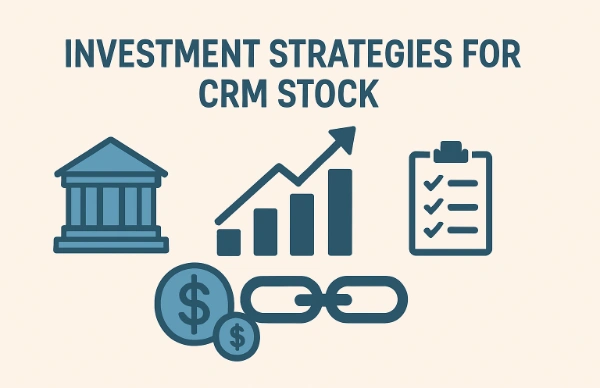
Long-term Buy and Hold Strategy
For investors believing in the long-term crm stock price prediction, a buy-and-hold approach offers several advantages:
- Benefit from compound growth over decades
- Reduced trading costs and tax implications
- Less exposure to short-term market volatility
- Participation in dividend growth potential
Recommended timeline: 10+ years for maximum benefit Risk level: Moderate to high Expected returns: 12-15% annualized
Dollar-Cost Averaging Approach
Regular investment in crm stock regardless of price levels:
- Reduces impact of market timing decisions
- Takes advantage of price volatility
- Builds position gradually over time
- Suitable for retirement account investing
Recommended timeline: 5-20 years Risk level: Moderate Expected returns: 10-13% annualized
Growth-Oriented Trading Strategy
Active trading based on earnings cycles and market sentiment:
- Higher potential returns during favorable periods
- Requires active monitoring and market knowledge
- Greater tax implications and trading costs
- Higher risk of mistimed entries and exits
Recommended timeline: 1-5 years Risk level: High Expected returns: 15-25% annualized (with higher volatility)
Technical Analysis and Chart Patterns
Current Technical Indicators
The crm stock exhibits several important technical characteristics:
- Moving Averages: Currently trading above 50-day but below 200-day moving average
- RSI: Moderate levels suggesting neither overbought nor oversold conditions
- Volume Patterns: Consistent institutional interest with above-average trading volume
- Support Levels: Strong support around $240-250 range
- Resistance Levels: Key resistance at $280-290 range
Long-term Chart Analysis
Historical price action suggests:
- Secular Uptrend: Despite periodic corrections, long-term trajectory remains positive
- Earnings Seasonality: Consistent outperformance during Q4 and Q1 earnings seasons
- Market Correlation: Lower correlation with broader market during technology sector rotations
- Volatility Patterns: Reduced volatility during stable growth periods
Fundamental Analysis Deep Dive
Revenue Growth Drivers
Salesforce expects revenue growth between 8% and 9% with full-year revenue guidance of $41.0 billion to $41.3 billion. Key revenue growth drivers include:
Agentforce AI Platform
- Revolutionary AI agent technology
- Potential to transform customer service operations
- Subscription-based recurring revenue model
- High switching costs creating customer retention
Data Cloud Expansion
- Data Cloud AI annual recurring revenue reaching significant milestones
- Integration with all Salesforce products
- Premium pricing for advanced analytics capabilities
- Growing demand for data-driven business insights
International Market Penetration
- Expanding presence in emerging markets
- Localization of products for regional requirements
- Strategic partnerships with local system integrators
- Currency translation benefits during dollar weakness
Profitability Metrics and Margins
The company provides operating margin guidance of 21.6% GAAP and 34.0% non-GAAP, indicating strong profitability trends. Key margin drivers include:
Operational Efficiency
- AI-powered automation reducing operational costs
- Scalable cloud infrastructure minimizing incremental costs
- Improved customer self-service reducing support expenses
- Streamlined development processes accelerating time-to-market
Pricing Power
- Market leadership position enabling premium pricing
- High customer switching costs supporting price increases
- Value-based pricing for AI and analytics capabilities
- Bundling strategies increasing average revenue per user
Market Catalysts and Growth Opportunities
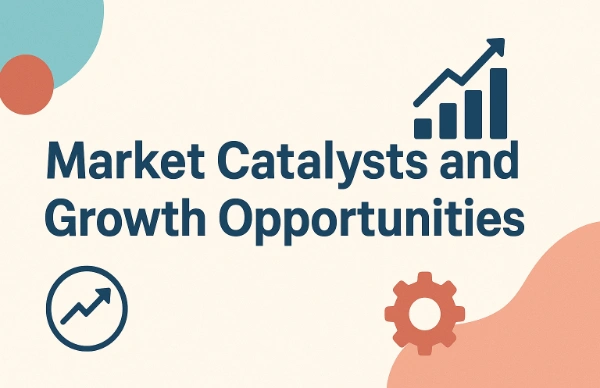
Artificial Intelligence Integration
The AI revolution represents the most significant opportunity for CRM stock appreciation:
- Agent Technology: Autonomous AI agents handling customer interactions
- Predictive Analytics: Advanced forecasting for sales and marketing optimization
- Natural Language Processing: Improved user interfaces and data analysis
- Machine Learning: Automated insights and recommendation engines
Digital Transformation Acceleration
Post-pandemic digital transformation continues driving demand:
- Remote Work: Continued need for cloud-based collaboration tools
- Customer Experience: Heightened focus on digital customer touchpoints
- Data Integration: Growing complexity requiring sophisticated platforms
- Automation: Pressure to reduce costs through process automation
Emerging Market Expansion
Significant growth opportunities in developing markets:
- Asia-Pacific: Rapid economic growth driving enterprise software adoption
- Latin America: Increasing digitization of business processes
- Africa: Leapfrogging technology adoption patterns
- Eastern Europe: EU integration accelerating technology investments
Environmental, Social, and Governance (ESG) Factors
Environmental Sustainability
Salesforce’s commitment to environmental responsibility enhances long-term value:
- Carbon Neutral Cloud: Commitment to net-zero emissions by 2030
- Renewable Energy: 100% renewable energy for global operations
- Sustainability Cloud: Products helping customers reduce environmental impact
- Green Innovation: Investment in environmentally friendly technologies
Social Responsibility
Strong social impact initiatives support brand value and customer loyalty:
- Workforce Development: Training programs for underrepresented communities
- Digital Equity: Bridging technology gaps in underserved areas
- Philanthropic Giving: 1-1-1 model donating equity, product, and employee time
- Inclusive Culture: Diversity and inclusion leadership in technology sector
Governance Excellence
Robust corporate governance practices reduce investment risk:
- Board Independence: Strong independent director representation
- Executive Compensation: Performance-based compensation alignment
- Risk Management: Comprehensive cybersecurity and compliance programs
- Shareholder Rights: Transparent communication and shareholder-friendly policies
Sector Trends and Industry Analysis
CRM Market Evolution
The customer relationship management market continues expanding:
- Market Size Growth: Global CRM market expected to reach $145 billion by 2029
- Cloud Migration: Continued shift from on-premise to cloud-based solutions
- AI Integration: Artificial intelligence becoming standard feature expectation
- Mobile Optimization: Increasing demand for mobile-first CRM experiences
Competitive Landscape Changes
The competitive environment presents both challenges and opportunities:
- Microsoft Dynamics: Growing integration with Office 365 ecosystem
- HubSpot: Strong position in small and medium-sized business segment
- Oracle: Comprehensive enterprise software suite competition
- New Entrants: Startups focusing on specific industry verticals or use cases
Technology Convergence
Related technology trends supporting CRM growth:
- Customer Data Platforms: Integration of all customer touchpoints
- Marketing Automation: Sophisticated multi-channel campaign management
- Sales Enablement: AI-powered tools improving sales productivity
- Customer Success: Proactive customer relationship management
Investment Risks and Mitigation Strategies
Market Risk Factors
Economic Sensitivity
- Enterprise software spending correlation with economic cycles
- Potential recession impact on customer acquisition and retention
- Currency fluctuation effects on international operations
- Interest rate changes affecting technology stock valuations
Mitigation Approach: Diversified portfolio allocation, focus on defensive characteristics of subscription revenue model
Technology Risk Factors
Innovation Disruption
- Rapid AI advancement potentially displacing current advantages
- New interface technologies (voice, gesture, VR/AR) changing user expectations
- Open-source alternatives reducing pricing power
- Cybersecurity threats to cloud-based platforms
Mitigation Approach: Monitor company R&D investments, assess competitive positioning regularly, maintain reasonable position sizing
Company-Specific Risk Factors
Execution Risk
- Ability to integrate acquisitions successfully
- Maintaining company culture during rapid growth
- Key employee retention in competitive talent market
- Product development timeline and quality management
Mitigation Approach: Regular fundamental analysis review, attention to management commentary and strategy updates
Global Economic Impact on CRM Stock
Macroeconomic Sensitivity
CRM stock performance correlates with several macroeconomic factors:
- GDP Growth: Enterprise software spending typically grows 1.5x GDP growth rates
- Employment Levels: Strong employment supports business confidence and software investments
- Technology Adoption: Digital transformation initiatives driven by competitive pressures
- Regulatory Environment: Data privacy regulations creating both challenges and opportunities
International Market Dynamics
Currency Translation Effects
- Strong dollar periods reducing international revenue contributions
- Emerging market currency volatility affecting growth rates
- Hedging strategies mitigating short-term fluctuations
- Long-term international expansion benefiting from local currency strength
Regional Growth Patterns
- North American market maturity requiring expansion to maintain growth
- European market providing steady growth with regulatory complexity
- Asian markets offering highest growth potential with competitive challenges
- Latin American markets showing accelerating digital adoption
Technical Innovation Roadmap
Next-Generation Platform Capabilities
Salesforce’s technology roadmap supports long-term price appreciation:
Artificial Intelligence Evolution
- Advanced natural language processing for conversational interfaces
- Predictive analytics becoming prescriptive recommendation engines
- Automated workflow creation based on business process analysis
- Real-time sentiment analysis and customer behavior prediction
Platform Integration Advances
- Seamless integration with Internet of Things devices
- Blockchain integration for supply chain and contract management
- Advanced mobile capabilities supporting field service operations
- Virtual and augmented reality interfaces for immersive customer experiences
Research and Development Investment
Despite revenue growth challenges, the company continues investing heavily in innovation to maintain competitive advantages:
- AI Research: Partnerships with leading universities and research institutions
- Acquisition Strategy: Targeted acquisitions of innovative technology companies
- Developer Ecosystem: Platform enhancements supporting third-party innovation
- Customer Co-Innovation: Joint development programs with major enterprise customers
Financial Projections and Valuation Models
Revenue Forecasting Methodology
Our CRM stock price predictions are based on comprehensive financial modeling:
Base Case Scenario (Most Likely)
- 2026: 12% annual revenue growth reaching $46 billion
- 2027: 10% annual revenue growth reaching $51 billion
- 2030: 8% average annual revenue growth reaching $64 billion
- 2040: 6% average annual revenue growth reaching $115 billion
- 2050: 5% average annual revenue growth reaching $187 billion
Optimistic Scenario (AI Leadership)
- 2026: 15% annual revenue growth reaching $47 billion
- 2027: 13% annual revenue growth reaching $53 billion
- 2030: 11% average annual revenue growth reaching $74 billion
- 2040: 8% average annual revenue growth reaching $160 billion
- 2050: 7% average annual revenue growth reaching $325 billion
Conservative Scenario (Competitive Pressure)
- 2026: 8% annual revenue growth reaching $44 billion
- 2027: 7% annual revenue growth reaching $47 billion
- 2030: 5% average annual revenue growth reaching $55 billion
- 2040: 4% average annual revenue growth reaching $81 billion
- 2050: 3% average annual revenue growth reaching $109 billion
Valuation Multiples Analysis
Price-to-Sales Ratio Projections
- Current: 8.5x trailing twelve-month revenue
- 2026: 7.5x projected revenue (maturation discount)
- 2030: 6.5x projected revenue (mature growth premium)
- 2040: 5.5x projected revenue (stable mature valuation)
- 2050: 4.5x projected revenue (utility-like stable cash flows)
Price-to-Earnings Ratio Expectations
- Current: 45x trailing twelve-month earnings
- 2026: 35x projected earnings (margin expansion benefit)
- 2030: 28x projected earnings (steady-state growth multiple)
- 2040: 22x projected earnings (mature technology company)
- 2050: 18x projected earnings (dividend-paying mature stock)
Portfolio Integration Strategies
Asset Allocation Recommendations
Conservative Portfolios (Age 50+)
- CRM Allocation: 2-4% of technology allocation
- Complement With: Dividend-focused technology stocks, bonds
- Rebalancing: Annual review with gradual reduction approaching retirement
- Risk Management: Focus on income generation and capital preservation
Moderate Portfolios (Age 30-50)
- CRM Allocation: 4-8% of technology allocation
- Complement With: Diversified technology sector ETFs, international exposure
- Rebalancing: Semi-annual review with growth focus
- Risk Management: Balance growth potential with portfolio stability
Aggressive Portfolios (Age 20-40)
- CRM Allocation: 8-15% of technology allocation
- Complement With: High-growth technology stocks, emerging market exposure
- Rebalancing: Quarterly review with momentum consideration
- Risk Management: Focus on long-term appreciation with higher volatility tolerance
Sector Diversification Benefits
CRM stock provides diversification benefits within technology portfolios:
- Different Growth Drivers: Software-as-a-Service model versus hardware cycles
- Customer Base: Enterprise focus versus consumer technology exposure
- Revenue Predictability: Subscription model versus transactional revenue
- Geographic Exposure: Global enterprise market versus domestic technology focus
Frequently Asked Questions
What is the most realistic CRM stock price prediction for 2026?
Based on current analyst projections and market conditions, the most realistic CRM stock price prediction for 2026 ranges from $325 to $350, representing approximately 27-37% upside from current levels. Analysts anticipate steady growth with an average price predicted at $302.63 for 2025, providing a strong foundation for 2026 performance.
How does CRM stock compare to NVDA stock for long-term investors?
CRM stock and NVDA stock serve different roles in long-term portfolios. While nvda stock benefits from AI hardware infrastructure growth, CRM stock provides exposure to AI software applications with more predictable subscription revenue. CRM offers lower volatility and more stable cash flows, while NVDA provides higher growth potential but with greater cyclical risk.
Should I invest in CRM stock for retirement planning?
CRM stock can be appropriate for retirement planning, particularly in the growth phase of retirement portfolios. The predictable subscription revenue model and growing dividend potential make it suitable for long-term wealth building. However, allocation should be balanced with other sectors and more conservative investments as retirement approaches.
How do Salesforce earnings affect CRM stock price?
CRM stock earnings significantly impact price, with recent Q2 results showing revenue of $10.24 billion versus $10.14 billion expected. Earnings announcements typically create significant price movements, with revenue growth, margin expansion, and forward guidance being key factors. Investors should expect 5-15% price movements following earnings releases.
What makes CRM stock different from other AI stocks?
CRM stock differs from other ai stock opportunities through its focus on customer relationship management applications rather than pure-play artificial intelligence. Salesforce integrates AI capabilities into proven business applications, providing more immediate revenue generation compared to speculative AI technologies. The company’s established customer base and switching costs provide competitive advantages.
Conclusion: Long-Term Investment Outlook for CRM Stock
The comprehensive analysis of CRM stock price predictions through 2050 reveals a compelling long-term investment opportunity for investors seeking exposure to the evolving customer relationship management and artificial intelligence sectors. With current analyst consensus maintaining “Buy” ratings and price targets around $342, the near-term outlook appears favorable.
Disclaimer: The information provided on CryptoStockHub.com is for educational and informational purposes only and should not be considered financial, investment, or trading advice. We are not financial advisors. Investing in stocks, ASX shares, blockchain, or cryptocurrencies is a high-risk endeavor, and it is essential to conduct your own research or consult a licensed financial advisor before making any investment decisions. Past performance is not an indication of future results.
